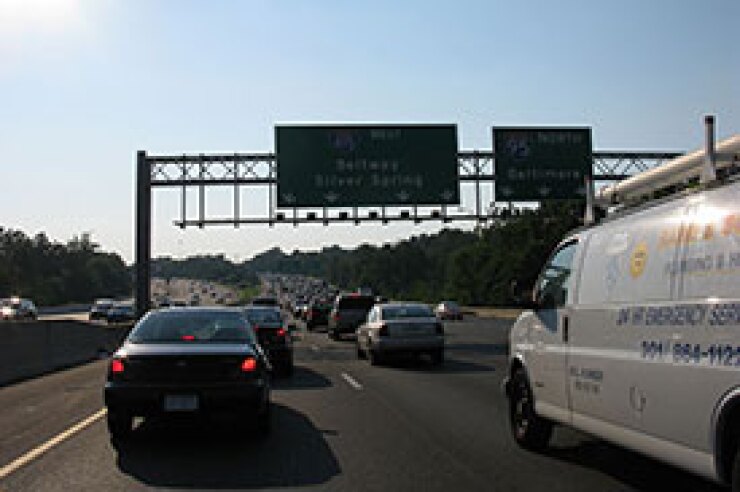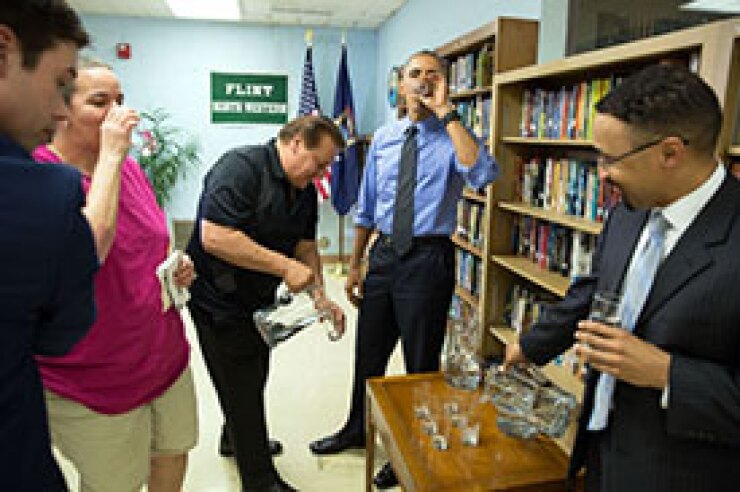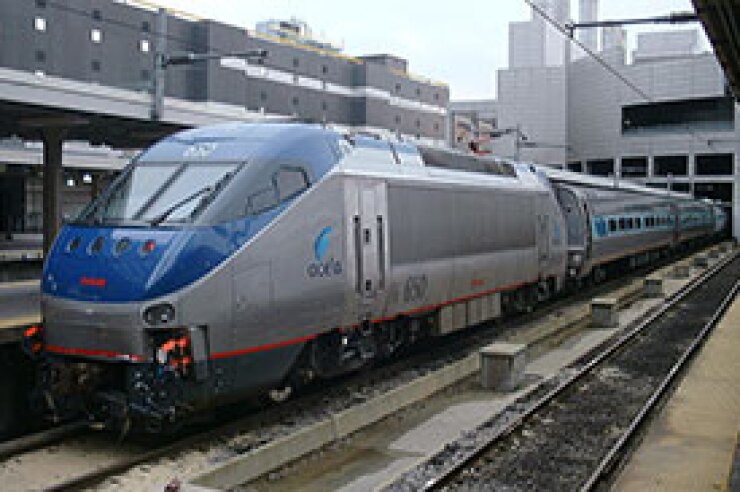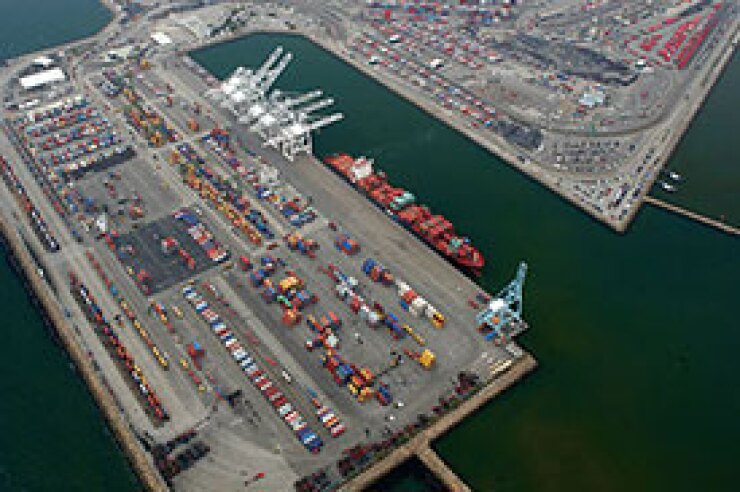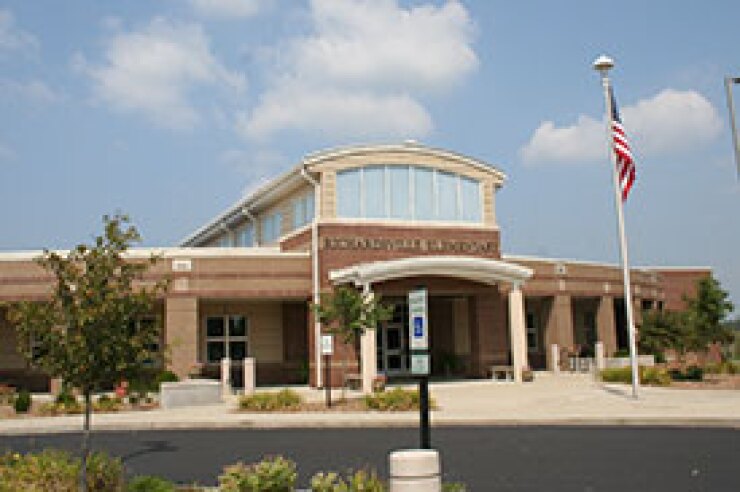
Virtually everyone agrees that the United States needs modern, well-maintained infrastructure to ensure its future prosperity. Platforms produced for both major political parties at their conventions this month mention the issue, with Democrats pledging to "make the most ambitious investment in American infrastructure since President Eisenhower created the interstate highway system" and Republicans noting that "everyone agrees on the need for clean water and safe roads, rail, bridges, ports and airports."
Yet financing that infrastructure has become highly contentious. Lawmakers at all levels of government – have different ideas of how much to spend on infrastructure and where that money should come from, and a hesitancy to increase taxes or concerns over spending huge amounts of money on "luxury" upgrades has created political gridlock in many places.
But if the spending were less controversial and the political will were there, the U.S. could substantially transform its infrastructure. The new construction and upgrades could change how Americans travel, strengthen the country's economic engine, and make our communities safer and happier places to live. Texans might ride a futuristic bullet train to Atlanta, every child might attend a modern well-equipped school, and no city would have to worry about the safety and reliability of its drinking water.
As The Bond Buyer reaches 125 years of covering how America finances its infrastructure needs, we take a look at ten key areas of need and what could happen if money and politics weren't in the way. We examine what the project is, how it could benefit America, and, importantly, how it could be financed.
INTERSTATE 2.0
What it is:
A total modernization of the interstate highway system with upgrades such as dedicated truck lanes, redesigned interchanges to reduce bottlenecking, and express bus service
How it benefits the country or region:
The new interstate would improve commerce and the quality of life by reducing travel times and creating easier access to major population centers. The existing system was built more than half a century ago during the presidency of Dwight Eisenhower, and in many sections is inadequate for modern traffic needs or becoming aged and unreliable.
How much it costs:
Roughly $1 trillion
How it gets paid for:
All options on the table, but the most realistic is likely a combination of federal spending driven by user fees such as gas taxes and some local investment. Gas taxes have historically been the major means, but P3s are possible if allowed by the federal government.
AIRPORT INFRASTRUCTURE
What it is:
A radically consolidated ATC system with current control towers replaced by ground-level or underground facilities using an array of airport sensors at large airports, along with expansions and modernizations.
How it benefits the country or region:
Creates a more efficient and safer air travel. Air travel facilitates the movement not only of passengers but also of goods, and is a crucial economic driver for many localities with large or hub airports.
How much it costs:
Billions, but exact cost depends on the extent of the upgrades. The Federal Aviation Administration is attempting to implement its “NextGen” technological upgrades program, but has said it is dependent on full federal funding for the next 3 years, a political uncertainty.
How it gets paid for:
Federal spending or existing avenues of airport finance, including bonds backed by airport fees. Passenger Facility Charges, fees levied at commercial airports controlled by public agencies, are capped at $4.50 per passenger and could be raised to produce more revenue.
BRIDGE REPLACEMENT
What it is:
A replacement of structurally deficient and obsolete bridges nationwide. The American Road and Transportation Builders Association estimates that there are 58,495 U.S. bridges in need of repair.
How it benefits the country or region:
Rebuilt bridges are safer and improve traffic flow because they can handle increased weight loads, whereas some older bridges now have had to limit traffic for safety concerns. Bridge replacement could also facilitate expansion of certain highway sections crucial to some local economies.
How much it costs:
Likely over $150 billion nationwide.
How it gets paid for:
A good P3 candidate because they can be tolled and backed with revenue bonds.
WATER INFRASTRUCTURE
What it is:
A replacement and expansion of America’s existing drinking water infrastructure, much of which is past or approaching its useful life
How it benefits the country or region:
Outdated water infrastructure can be unreliable or even unsafe, as in Flint, Michigan. Water main breaks can interrupt service and cause costly damage.
How much it costs:
The American Water Works Association has estimated it will cost about $1 trillion through 2035, assuming replacement of the entirety of America’s drinking water system over that time. Drinking water components typically have a 15-95 year useful lifespan.
How it gets paid for:
Local planning and financing is the way to go, as each localities needs are unique. Some communities would pay as they go, others would bond.
NATIONWIDE HIGH SPEED RAIL
What it is:
A nationwide network of trains capable of exceeding 200mph. Such trains are already common in Europe and Asia, but are essentially nonexistent in the U.S. Amtrak operates a “high speed” Acela service in the Northeast, but its average speeds along its route are considerably slower than other high speed rail services globally.
How it benefits the country or region:
These trains could provide a green, fast way to travel between major metropolitan areas. They could serve as an alternative to air travel for short to intermediate distance trips, such as between Seattle and San Francisco or Houston and New Orleans. The U.S. Conference of Mayors has touted the economic benefits high speed rail would have to cities served by it.
How much it costs:
$500 billion plus
How it gets paid for:
A combination of federal dollars and local borrowing via bonds. The federal government has shown an interest in helping local governments leverage federal money to build high speed rail infrastructure.
PORT MODERNIZATION
What it is:
A series of improvements to the largest U.S. ports to ensure their continued economic competitiveness. Includes deepening them, adding more land-side cargo infrastructure, inclusion of robotic technologies.
How it benefits the country or region:
Modernized U.S. ports will facilitate more efficient interstate and international commerce, and help prevent port-driven localities from being driven out of business by ports in Mexico or Canada.
How much it costs:
More than $1 trillion
How it gets paid for:
Port authorities would borrow via bonds backed by their revenues. Port Authorities are already often some of the largest most frequent issuers in the U.S., and many have high credit ratings allowing them to borrow at a low cost.
SCHOOL UPGRADES
What it is:
Getting U.S. K-12 education into good operating condition. Almost half of U.S. public school buildings were built for the baby boom generation born between 1950 and 1969, the American Society of Civil Engineers reports.
How it benefits the country or region:
U.S. schools serve as not only education centers, but also as community gathering places, shelters during disasters, and other important functions.
How much it costs:
$270 billion plus.
How it gets paid for:
State and local spending, including bonds that could be either general obligations or increasingly-popular property-tax bonds. The ASCE also recommends exploring alternative financing options and innovative ways to reduce costs. Warren County Kentucky’s Richardsville Elementary School, for example, generated enough electricity via solar panels to sell energy back to the grid.
HAZARDOUS WASTE SITE CLEANUP AND REDEVELOPMENT
What it is:
Cleanup and redevelopment of more than 1,000 unsafe brownfield sites. The U.S. produces millions of tons of hazardous waste annually.
How it benefits the country or region:
These sites pose a potential health and safety risk and also can’t be turned into useful public sites until they are cleaned up and made safe.
How much it costs:
Roughly an extra $500 million annually over what the Federal government currently spends. Possibly more than $200 billion over the next 30 years.
How it gets paid for:
Federal spending through the Environmental Protection Agency’s Superfund is the traditional way, but the EPA can also force whoever is responsible to clean up the site in many cases. Localities could partner with the federal government or be incentivized to redevelop these sites locally.
LEVEE REPAIR
What it is:
Repair and replacement of American levees, which protect both farmland and developed areas from flooding. The U.S. has some 100,000 miles of levees in all 50 states and the District of Columbia
How it benefits the country or region:
Insufficient or outdated unreliable levees can fail, causing devastating losses to the communities affected.
How much it costs:
More than $100 billion.
How it gets paid for:
P3s are a possibility, if surrounding infrastructure or the waterway can be monetized. US Army Corps of Engineers needs additional federal funding, localities must increase investment on levees not the responsibility of the federal government.
NEW AGE ENERGY INFRASTRUCTURE
What it is:
Modernizing and expanding an increasingly outdated and unreliable distribution and transmission network for U.S. power supplies.
How it benefits the country or region:
Outages are a huge blow to the communities affected, slowing business to a crawl and creating a dangerous situation.
How much it costs:
Experts believe there is an investment gap of roughly $100 billion over the next several years.
How it gets paid for:
Largely local and P3, but federal government can play a role, particularly in incentivizing or helping in the development of green energy infrastructure.
